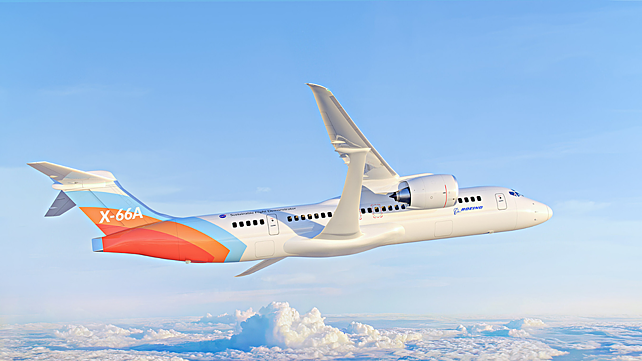
The US-based carriers will collaborate with Boeing and NASA to advise the latter on their ambitious Sustainable Flight Demonstrator (SFD) project and the development of the X-66A research aircraft.
The X-66A is NASA's first X-plane focused on helping achieve its goal of net-zero aviation greenhouse gas emissions. Flight testing of the X-66A is slated for 2028 - 2029 out of Armstrong Flight Research Center at Edwards Air Force Base.
The new sustainability coalition features participation from Alaska Airlines, American Airlines, Delta Air Lines, Southwest Airlines and United Airlines, who will provide Boeing and NASA input on operational efficiencies, maintenance, handling characteristics and airport compatibility.
Todd Citron, Chief Technology Officer, Boeing, said, 'Hearing directly from the operators during all phases of the Sustainable Flight Demonstrator project will help us understand exact requirements and trade-offs. The airlines' feedback will significantly contribute to the X-66A project learnings while furthering aviation sustainability.'
The US carriers will offer feedback throughout the project on a variety of aspects, including feedback on sustainable operations and airport compatibility. While the X-66A will have a wingspan of 145 feet, the Transonic Truss-Braced Wing (TTBW) design could be used by future airplanes of different sizes and missions and could also benefit from folding wing tips to accommodate existing airport infrastructure; Airline pilots will also have a chance to experience the X-66A through a flight simulator and assess the vehicle's handling characteristics, while airline operations and maintenance teams will be able to assess the X-66A as modifications are made to the airplane.
The X-66A will test a new Transonic Truss-Braced Wing (TTBW) airframe configuration, and the test aircraft will be built from a modified McDonnell Douglas MD-90 aircraft at a Boeing facility in Palmdale, California. It is expected to combine upcoming advancements in propulsion systems, materials and systems architecture.
A future single-aisle airplane with a TTBW configuration could reduce fuel consumption and emissions by up to 30% relative to today's domestic fleet of single-aisle jetliners and regional jets.
Also Read
US Airports To Deploy NASA-Developed Air Traffic Scheduling Technology